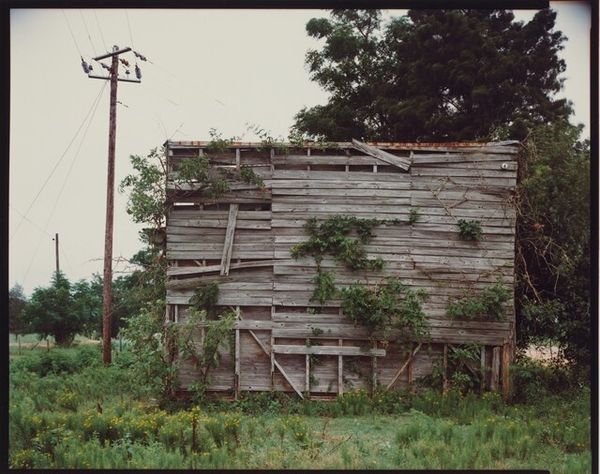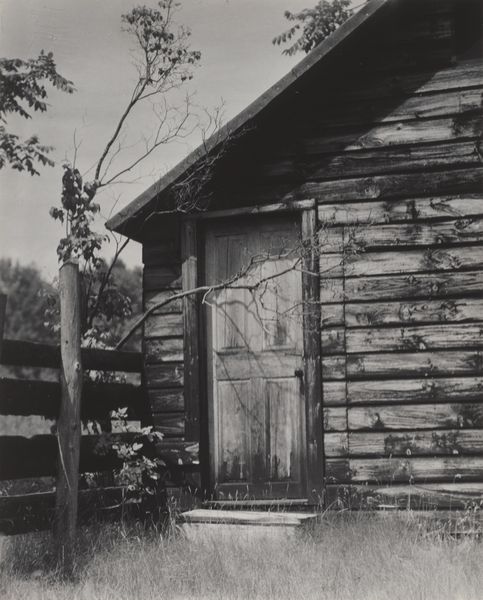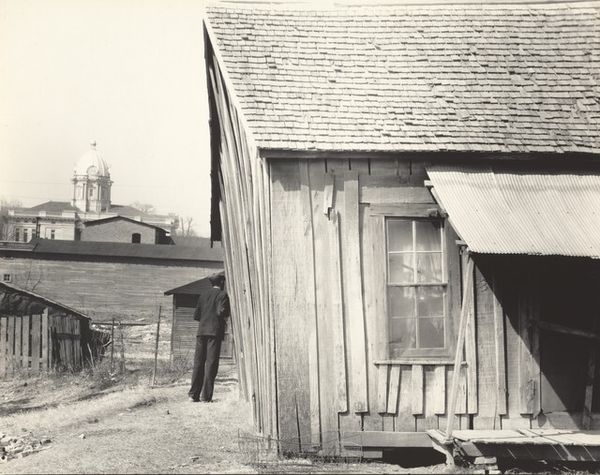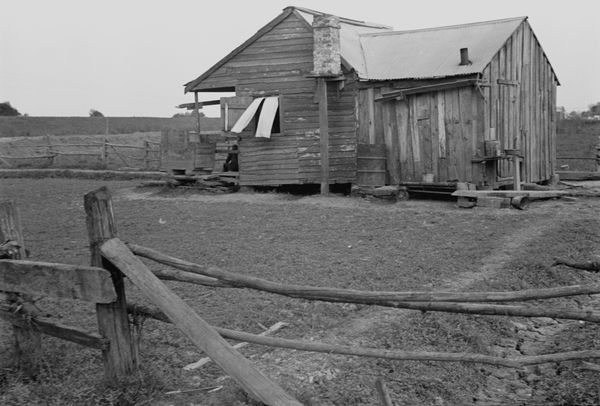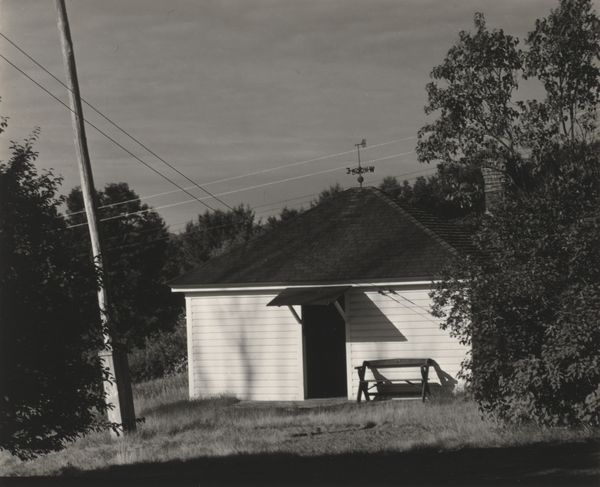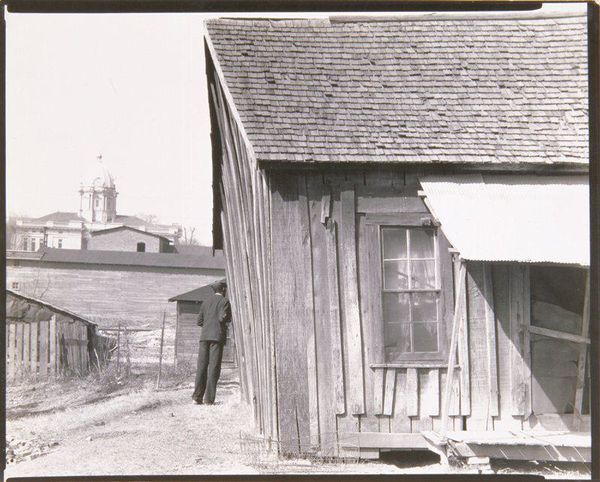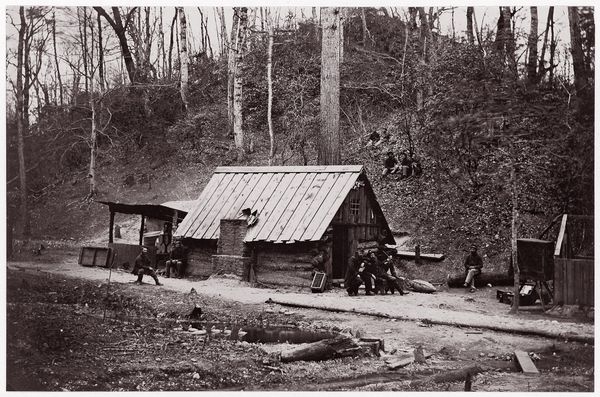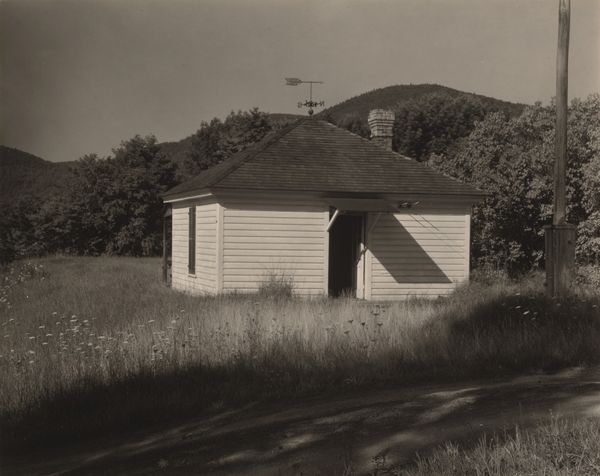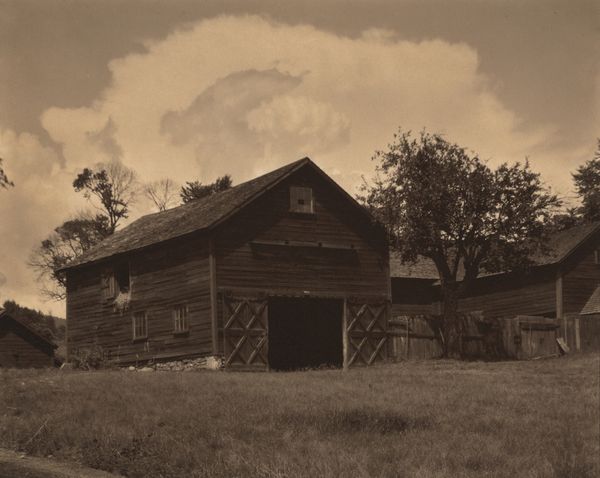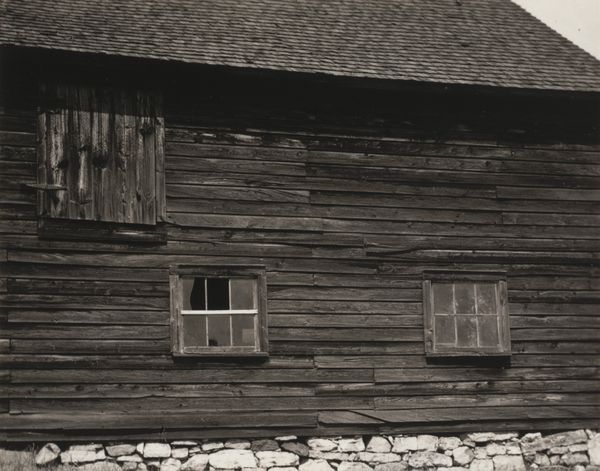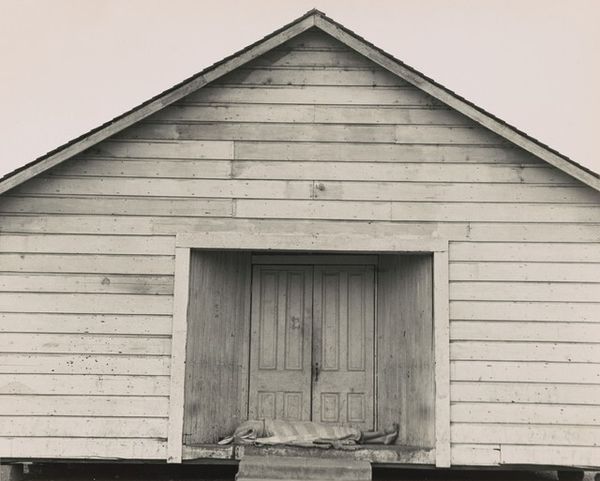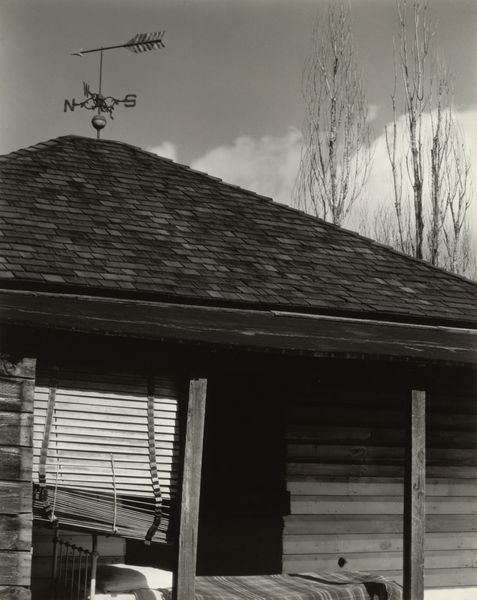
photography, gelatin-silver-print
#
black and white photography
#
landscape
#
social-realism
#
photography
#
black and white
#
gelatin-silver-print
#
monochrome photography
#
monochrome
#
monochrome
Dimensions: image/sheet: 18.4 × 25.1 cm (7 1/4 × 9 7/8 in.) mount: 45.7 × 35.6 cm (18 × 14 in.)
Copyright: National Gallery of Art: CC0 1.0
Curator: We’re looking at Milton Rogovin’s "Appalachia" from 1962, a gelatin silver print. Editor: Bleak. Strikingly bleak, almost like a ghost of a place hanging there, faded, a testament to something… difficult. Curator: Rogovin aimed to capture the dignity and resilience of working-class communities, especially those marginalized and often overlooked. His social realism lens presents us with an honest vision. The weathered textures, the ramshackle roof...it tells a story. Editor: Absolutely, and consider the textures: corrugated metal patches, rough-hewn planks, that heavy dark fabric on the washing line, and the smoke stained chimneys. Everything’s tactile, demanding we consider what it means to live *with* these materials. And to labour amongst them. Curator: It also hints at ingenuity and making do. I see resourceful solutions everywhere here, an adaptation. Clothes airing becomes a raw proclamation. We can imagine what that small space meant, and it is simultaneously everything and nothing. Editor: Precisely! Those stacked wooden blocks… crude, provisional steps. Think about the labor invested not just in mining or manufacturing in this region, but in simply maintaining a habitable space against the elements and broader forces. Curator: And notice that the house is almost enveloped by the wilderness; like nature is patiently claiming it back. You can see the sadness that comes along with hardship, but resilience blooms still among that wilderness. Editor: You're right to focus on the natural environment. The contrast is so crucial here – the dark looming of those trees, the misty quality. It pushes our sight toward what matters – this constructed building, how materials are utilized for shelter, but what kind? It really throws our relationship to these built structures into question. Curator: It’s an image soaked in a quiet sorrow, and I think there is a strange dignity too. I walk away seeing how connected our narratives become, whether intended or not. Editor: I’m leaving thinking of the unseen labor – the sourcing, patching, the continuous making-do of a space like this, all the ways value is created and extracted beyond any market transaction. Fascinating how one still photograph contains so many questions of how things become.
Comments
No comments
Be the first to comment and join the conversation on the ultimate creative platform.
